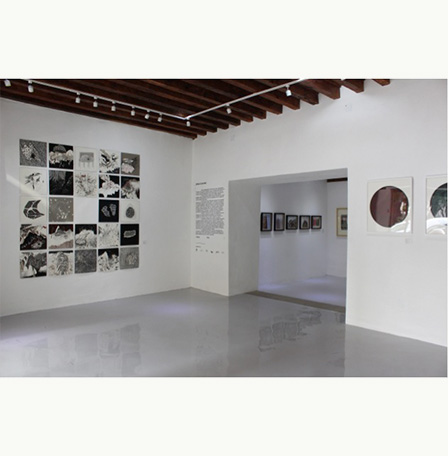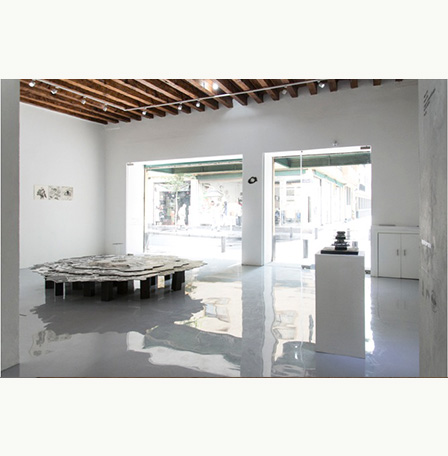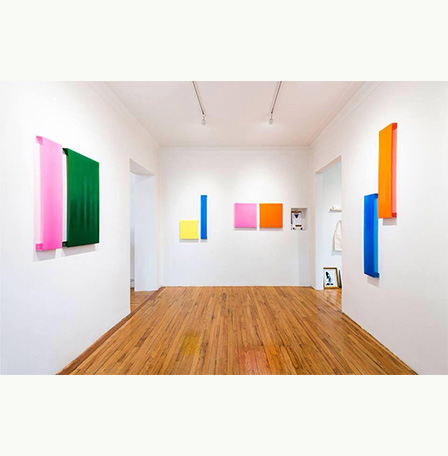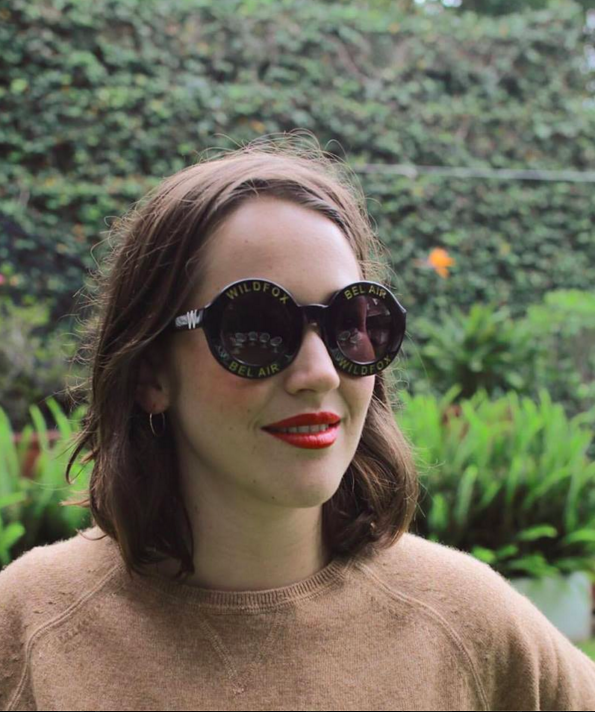Back to Catalogue View
Art Galleries in Mexico City: 4 Emerging Projects By Melissa Mota – November 4, 2015
For several decades, different projects have emerged in Mexico City dedicated to contemporary art that seek to generate new approaches to artistic creation, as well as alternative models of promotion to encourage local collecting. Currently, there are several initiatives that address certain blind spots in the artistic system of our country by supporting young talent that can hardly achieve a certain visibility in the media.
White Cremnitz, Galería Karen Huber, Galería Breve and The Neon Rex Project, are some of the projects that have emerged in the last three years. Their founders and directors are art historians, artists or curators, allowing them to conceive a perspective and a model of action that does not respond exclusively to commercial purposes.
White Cremnitz is a gallery located in the heart of the historic downtown, opened in 2014, they represent a group of young artists focused mainly on experimentation with the visual arts. Its location in one of the areas with the greatest diversity and complexity of Mexico City has built the character of the gallery for over a year. As noted by the director, Teresa Marmolejo, "most of the galleries are concentrated in one area, and what we wanted to do was to get out of that circuit for the purpose of generating new audience in the city. It is very interesting to see the reaction of the people who live and converges around the gallery; although there are many museums, many of these people have had in White Cremnitz their first approach to art. "
Also in the line of fine arts, Galería Karen Huber focuses on exploration, research and exhibition of contemporary pictorial expression and its relationship with other disciplines. Through a strong academic program and residencies for international artists, it seeks to promote the exchange of ideas and views among its artists. Furthermore, in order to enhance the dissemination of the represented artistic work, numerous activities are held parallel to the openings such as presentations, discussions, concerts, dinners, workshops and round tables activities. In the words of Karen Huber, "our commitment is to promote the contemporary Mexican art scene and acknowledge painting from its various sensitive and formal possibilities."
The newly opened Barrio Alameda, a project that, after a restoration of the building which houses them - Art Deco style from the 1920s - seeks to provide the historic downtown with a space where different commercial and creative offers can coexist. In this new environment we find Galería Breve and The Neon Rex Project.
Galería Breve emerged in 2012 as a sporadic space dedicated to present one day exhibitions of young artists works. Back then, its headquarters was the framing house Rosano in the Roma neighborhood. Since the project started -created by Begoña Irazábal and Jorge Rosano-, its purpose was clear: to assist artists with the production of their works, spread the word of their artistic practice and establish links with potential collectors. According to Irazábal, "the interest of the gallery is to show the work of young artists, be a place of transit and linking projects, and be a launching platform for new generations." Since last year, Breve has hosted several short exhibitions.
The Neon Rex Project is a platform dedicated to New Media Art, which aims to support artists´ solid proposals that are based on experimentation and the incorporation of technology into their artwork. Its director, Christopher Martinez, described it as "a 'hybrid gallery', we move between the limits of a commercial gallery, a virtual gallery, a parasite project and an artist-run space. That is, we seek the time and space for projects to take shape ". Throughout their year and a half of operations, Neon Rex has been exhibiting in Spain, United States, Germany and South Korea, and was part of the first edition of the Unpainted fair in Germany.
These four initiatives reflect the interests and personality of a new generation of gallerists looking to expand the ongoing dialogue about art and its system, which results in a wide range of emerging and open spaces. On this subject, Martinez says that "the cultural activity that gives rise to these spaces is the result of the sum of certain factors that have to do with the Millennial Generation, to which artists, managers and curators belong to and whose main characteristic features are to incorporate new technologies in everyday life, the intellectual curiosity and yearning for independence. In turn, this has triggered a boom in startups and independent spaces managed mostly, by people of this unsatisfied generation, but also restless and entrepreneurial [...] the everyday emergence of new spaces is a symptom of a need to generate a change from independence and self-generated opportunities in an artistic system that seemed far away. "
Meanwhile, Irazábal mentions that many spaces have recently emerged "because it was necessary to create a bridge between emerging artists and the current art system. There was no place for young artists to show their work, and for them it is difficult to access consolidated galleries. Furthermore,"it a natural happening in Mexico nowadays where we live realities so different and, at the same time, parallel. On one hand the rapid growth in certain areas and on the other the political misfortunes. Thus, we have no choice than to focus all that negative energy into a positive development", says Huber.
As the current situation offers certain advantages such as efficient tools for the dissemination and the interest of new sectors for contemporary art, it also poses certain challenges as the hegemony of certain consolidated galleries. According to Marmolejo, it is an "exclusive closed circle that is difficult to access to. The important thing is not to lose sight of the goal of the gallery, the line of artists who you want to represent and demonstrate professionalism. It is necessary that the exclusive circle gradually becomes more flexible, that emerging spaces have closer ties and to establish bonds. In the end, we have a common purpose: art. The main thing is to see us as allies, not as competition. "
On the other hand, Martínez believes that "the wonder of these projects do not necessarily face an antagonism with respect to the already consolidated spaces. We, the new spaces are looking for our own market, our own artists and our own discourse (...) the real challenge is to stay afloat. Finally, Huber adds, "it is a work of years and perseverance, and the challenge is to create confidence in the viewer, the collector and the artistic sphere."
Despite their short life and the difficulties of the environment and the current context of Mexico, these galleries give voice to some artists who will shape the next generation of local art and remark certain axes of the Mexican artistic work. Furthermore, with its objectives and specific profiles they contribute to the formation of diverse audiences as well as the joint construction of questions that rather than seeking answers, shed light on the concerns, aspirations and the current situation of the Mexican contemporary art.
-
Galleries:—Breve
Dr. Mora #9, local 31
Centro Histórico
—Karen Huber
Bucareli #128 (Edificio Vizcaya)
Col. Juárez
karen-huber.com
—The Neon Rex Project
Dr. Mora #9, local 30
Centro Histórico
—White Cremnitz
Bolívar 87 C
Centro Histórico














